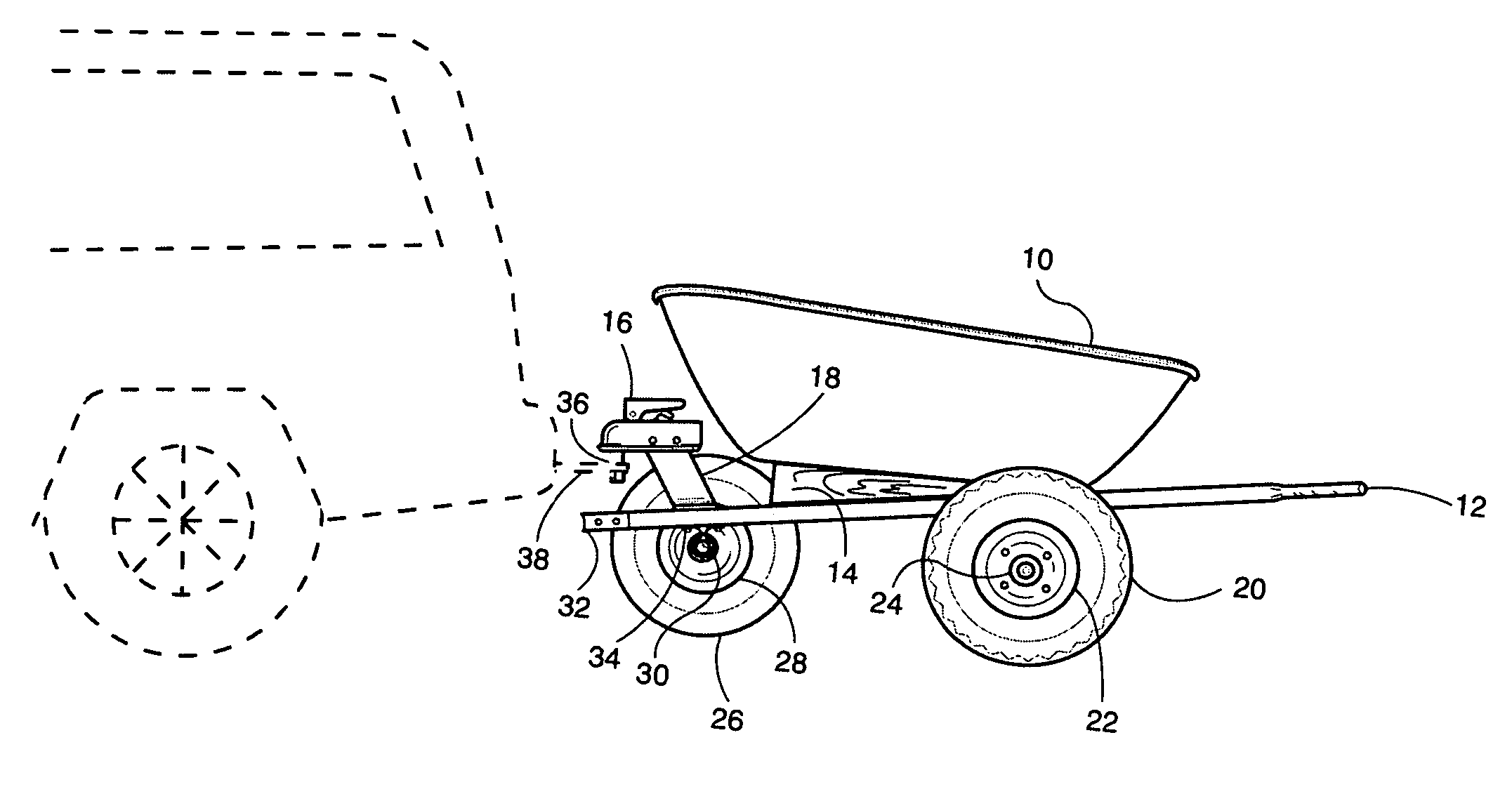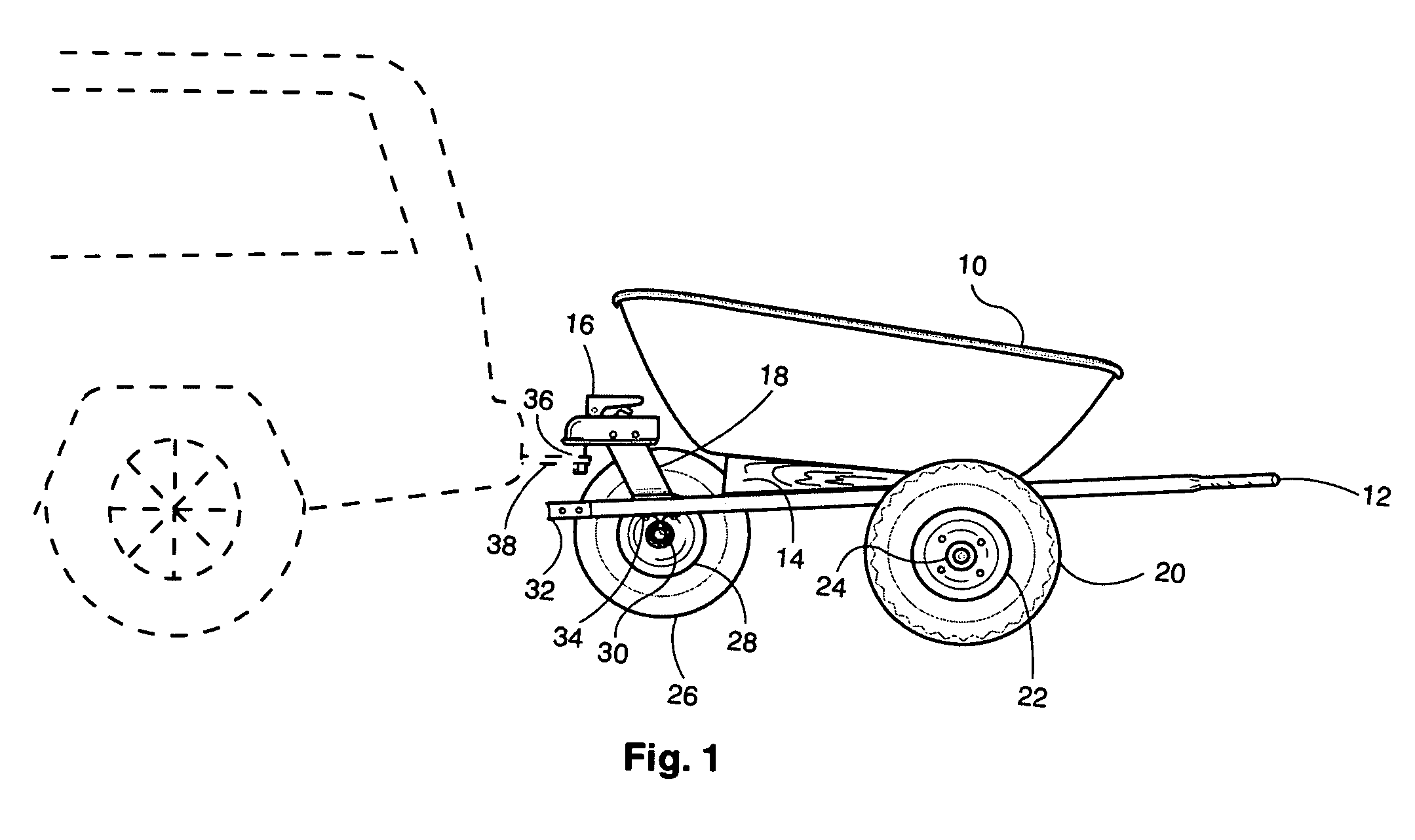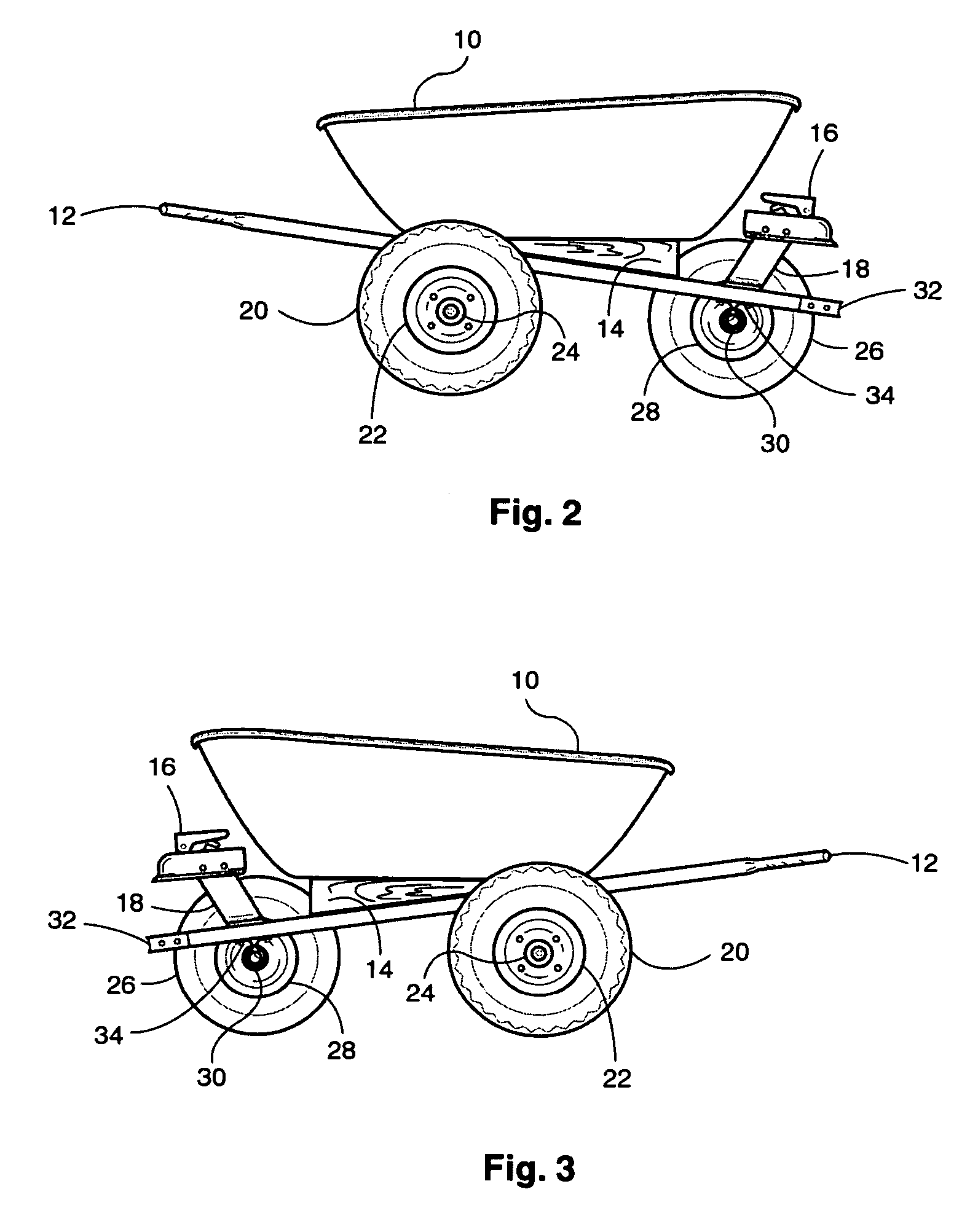Wheelbarrow trailer
a technology of trailers and wheelbarrows, applied in the field of improved wheelbarrows, can solve the problems of limiting the distance and speed of a conventional wheelbarrow, the prior art of converting a wheelbarrow into a cart, and the inability to facilitate transportation of items and debris on public highways, public roads, non-public roads and off-road terrain at high speeds. it facilitates one-time load and dump capabilities, saves labor and time, and facilitates transportation
- Summary
- Abstract
- Description
- Claims
- Application Information
AI Technical Summary
Benefits of technology
Problems solved by technology
Method used
Image
Examples
Embodiment Construction
[0052]The preferred embodiment of the wheelbarrow trailer is illustrated in FIGS. 1-7. It is comprised of a material holding steel tub (10) mounted to left and right structural rails and / or left and right handles (12) and through two levelers (14). The wheelbarrow trailer is attached to a motor vehicle by a coupler (16). The coupler(16) is attached to left and right coupler brackets (18). The left and right coupler brackets are attached to respective left and right structural rails (12). The ends of the structural rails act as handles for the wheelbarrow. The coupler (16) engages and locks on to a motor vehicle receiver hitch and ball as shown in FIG. 7.
[0053]The railer suspension consists of left and right rear tires (20) mounted to left and right wheels (22) which are assembled on left and right axles (24). A front tire (26) is mounted to a wheel (28) which is attached to the structural rails (12) via a front axle (30) and left and right axle brackets (34). A structural member bra...
PUM
 Login to View More
Login to View More Abstract
Description
Claims
Application Information
 Login to View More
Login to View More - R&D
- Intellectual Property
- Life Sciences
- Materials
- Tech Scout
- Unparalleled Data Quality
- Higher Quality Content
- 60% Fewer Hallucinations
Browse by: Latest US Patents, China's latest patents, Technical Efficacy Thesaurus, Application Domain, Technology Topic, Popular Technical Reports.
© 2025 PatSnap. All rights reserved.Legal|Privacy policy|Modern Slavery Act Transparency Statement|Sitemap|About US| Contact US: help@patsnap.com



